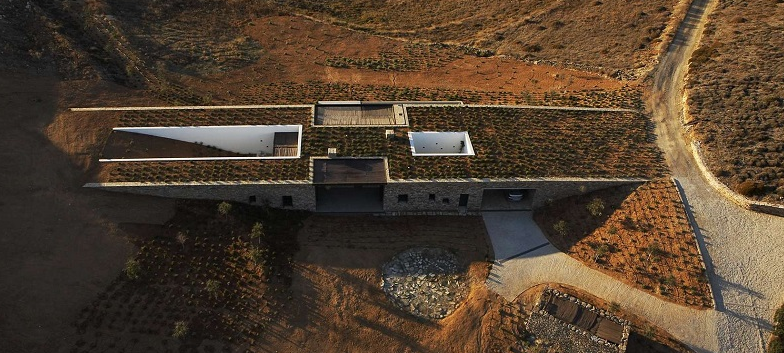Underground architecture holds a mysterious allure, captivating our imagination with the secrets hidden beneath the earth’s surface. For centuries, humanity has looked skyward, constructing towering edifices that pierce the clouds. But beneath our feet lies another architectural frontier – the captivating world of underground spaces. From ancient cave dwellings to modern marvels of engineering, underground architecture offers a unique perspective on design, construction, and our relationship with the natural world.

The Ancient Roots of Underground Architecture
The concept of living underground is not new. Some of the earliest human settlements were in caves, providing shelter from harsh weather and wild animals. These early dwellings showcase a basic understanding of subterranean spaces – using natural rock formations for protection and comfort.
Over time, civilizations across the globe incorporated underground structures into their societies. In Cappadocia, Turkey, intricate networks of underground cities like Kaymakli and Derinkuyu were carved into volcanic rock. These multi-level structures housed entire communities, complete with living quarters, storage spaces, and even churches. In China, the Yaodong – earthen cave dwellings – have been inhabited for centuries, offering natural insulation and protection from the elements.
The Functional and Cultural Significance of Underground Spaces
Throughout history, underground architecture has served various purposes beyond basic shelter. Here are some fascinating examples:
Catacombs
These extensive underground burial grounds, like the famous Roman Catacombs, were used for centuries to house the deceased.
Temples and Tombs
Additionally, many ancient civilizations, such as the Egyptians with their pyramids, built impressive underground structures for religious and funerary purposes.
Storage Facilities
Subterranean spaces were often used for storing food, water, and other valuable resources, offering protection from temperature fluctuations and spoilage.
Military Fortifications
Underground structures played a crucial role in warfare, with hidden fortresses and tunnels providing strategic advantages.
Engineering Feats and the Rise of Subterranean Cities
In the modern era, advancements in technology and engineering have allowed for the creation of even more complex and awe-inspiring underground structures. Here are some exciting developments:
Underground Transportation Systems
Subways, metro lines, and even high-speed rail networks like the Channel Tunnel rely on tunnels to efficiently navigate urban landscapes.
Shopping Malls and Entertainment Complexes
Furthermore, many cities boast vibrant underground shopping malls and entertainment districts, offering a unique and climate-controlled environment.
Eco-Friendly Designs
Underground structures can be designed with sustainability in mind. They can offer natural insulation, reducing energy consumption for heating and cooling. Green roofs can be incorporated above underground structures, creating additional green spaces in urban areas.
Underground Homes
While not as common, some architects and homeowners are exploring the potential of building energy-efficient and sustainable homes underground.
Challenges and Considerations
Additionally, constructing underground spaces comes with its own set of challenges. Here are some key considerations:
Cost
Excavation, waterproofing, and special construction techniques can make building underground more expensive than traditional above-ground structures.
Ventilation and Lighting
Ensuring proper ventilation and natural light access can be a challenge in subterranean spaces.
Safety
Fire safety, flood risks, and potential structural concerns require careful planning and engineering solutions.
A Glimpse into the Future
Moreover, despite the challenges, underground architecture holds immense potential for the future. As urban populations grow and the need for sustainable solutions increases, subterranean spaces could offer a viable alternative for expanding living and working areas.
Conclusion
In conclusion, there’s a certain mystique associated with underground architecture. It evokes a sense of hidden worlds, forgotten civilizations, and the potential for groundbreaking discoveries. From ancient cave dwellings to modern marvels of engineering, underground spaces remind us of humanity’s ingenuity and adaptability. Furthermore. as we continue to explore and develop this unique architectural realm, the possibilities for sustainable living and innovative design seem endless. So, the next time you walk down a bustling city street, remember that another world – a fascinating and ever-evolving one – exists beneath your feet.

